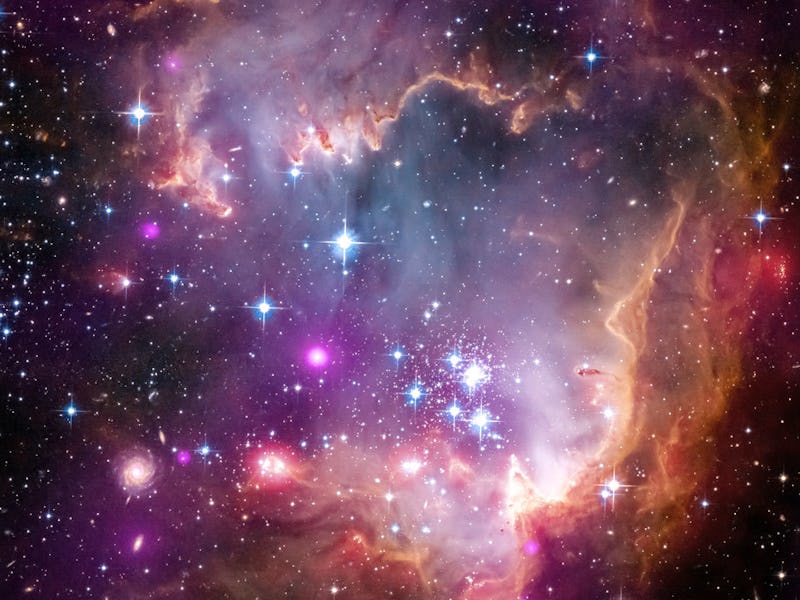
About 200,000 light-years away in a galaxy known as the Small Magellanic Cloud lies a stellar cluster bursting with millions of young stars. The cluster is of special importance to the scientific community because it is so close to Earth (relatively speaking!) and so highly visible.
Using a combination of the Chandra X-Ray Observatory, the Spitzer Space Telescope, and the Hubble Space Telescope, astronomers created a composite image of the cluster, NGC 602, to show the complexity of this region. The image itself spans about 200,000 light-years across, and multiple distant galaxies can be seen in the background, truly making this image multi-dimensional.
NGC 602 is a force to be reckoned with. Powerful winds and shockwaves from the heat of the forming stars pushes the dust outward to create a cradling effect around the cluster. Some of these stars have such a magnetic force that they are actually propelling forward from the center of the cluster.
The image switches between the composite, xray, infrared, and optical versions of the photo, in that order.
Scientists calculate that the older stars — the ones that have shifted from the center — are about five million years old, and that the most central stars in the cluster are about one million years old. Some nebular material still appears to be embedded within the younger stars — a common sign of youth for stars.
NGC 602 is actually located within the Magellanic Bridge, which connects the Small and Large Magellanic Cloud galaxies, and is one of two major clumps of stars in the connection. Because they aren’t shrouded by either galaxy, they have less cosmic material in the way. So, scientists can see the cluster more clearly than other stellar nurseries, even ones in our own Milky Way.